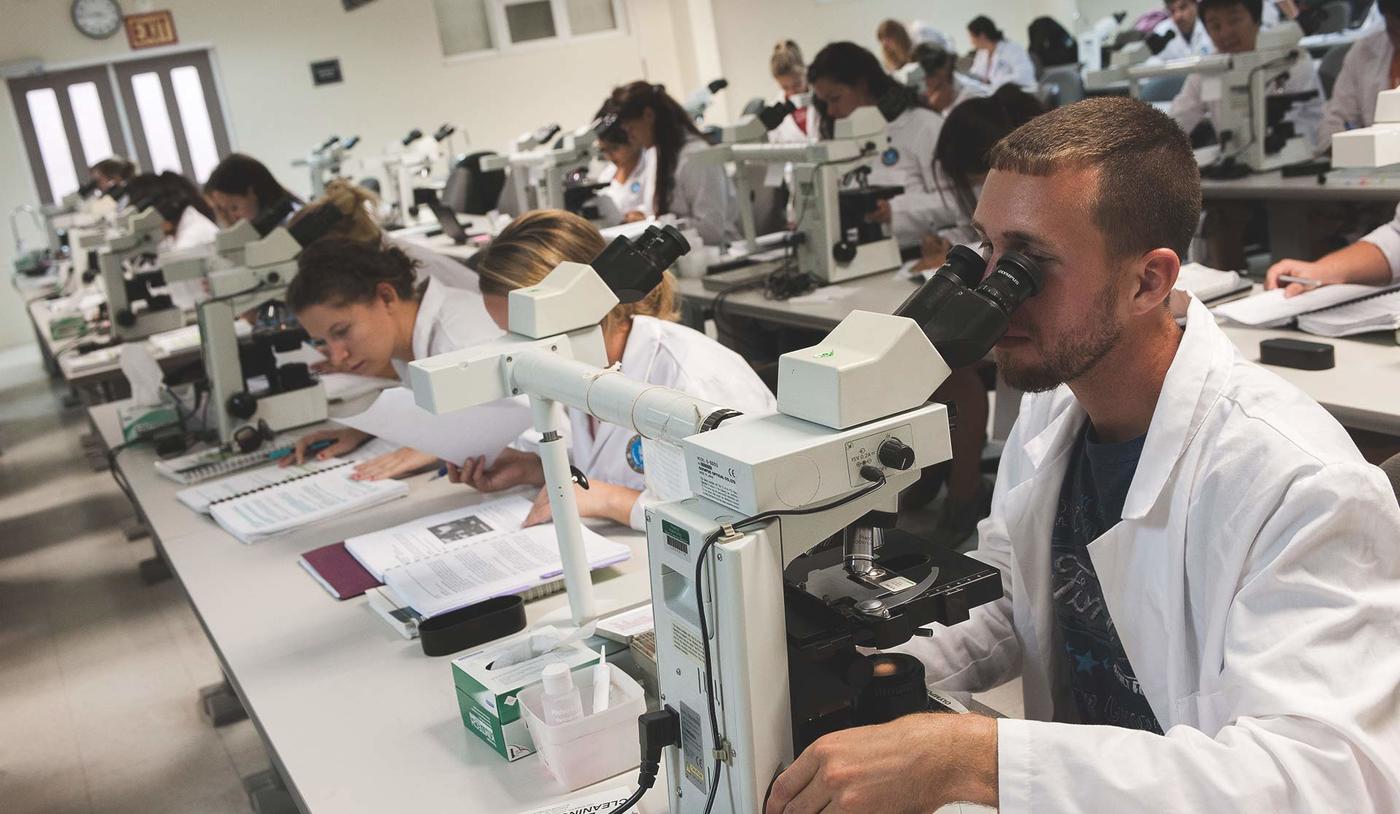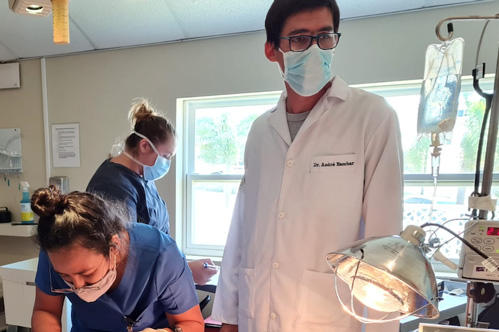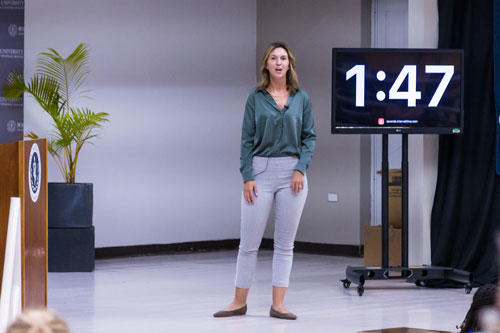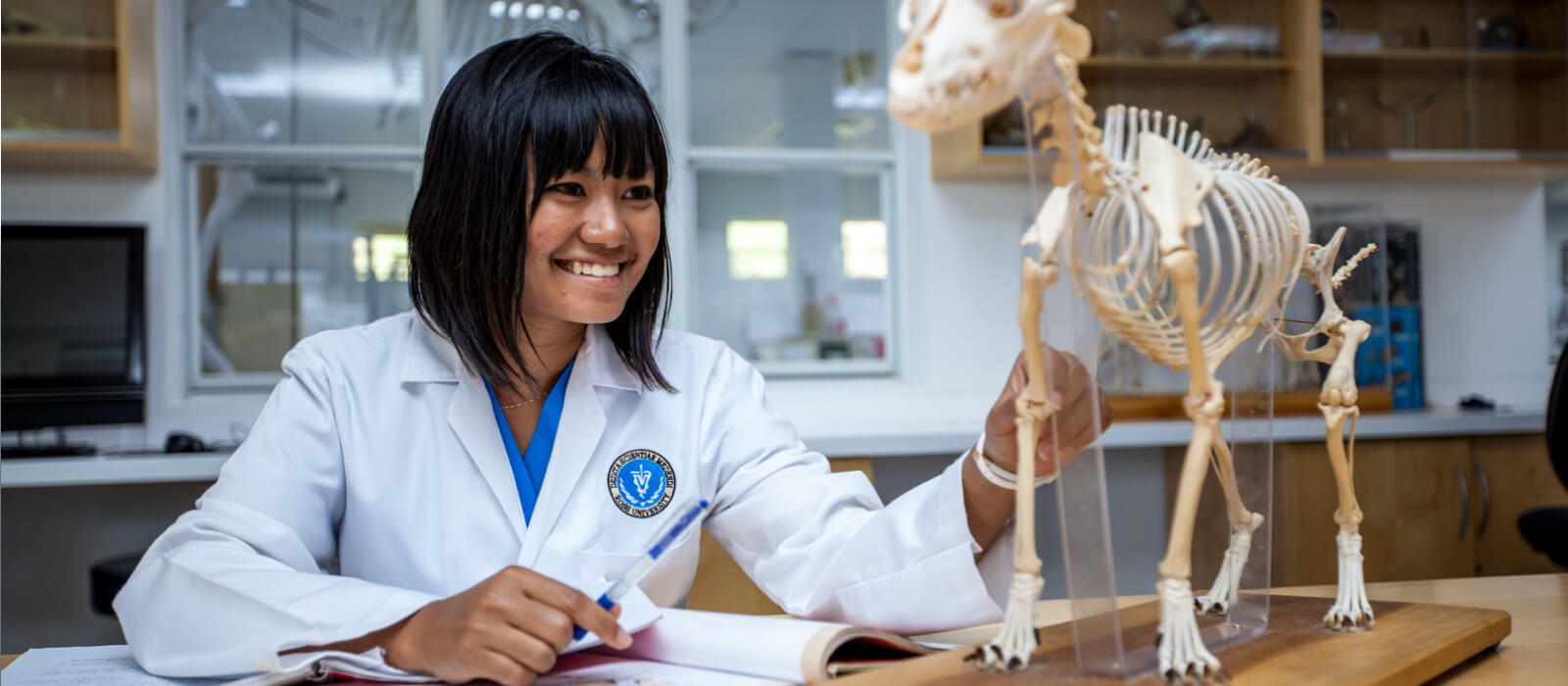Ross University School of Veterinary Medicine (Ross Vet) researchers Dr. Jennifer Ketzis, Ian Branford, and Dr. Arve Lee Willingham, with colleagues from Cornell University and the Behavioural Science Foundation, recently published their paper, “Identification of Schistosoma mansoni infection in a nonhuman primate from St. Kitts more than 50 years after interruption of human transmission” in the American Journal of Tropical Medicine & Hygiene.
“The finding informs us of the zoonotic nature of S. mansoni in the Caribbean, as we know that both monkeys and rodents may be infected and could continue maintaining the parasite even though human cases are no longer detected. This has ramifications for verifying the elimination of the parasite from the region, which is a priority for the Pan American Health Organization (PAHO), says Dr. Lee Willingham.
What is Schistosomiasis?
Schistosomiasis is an acute and chronic disease caused by parasitic worms. People become infected when larval forms of the parasite – released by freshwater snails – penetrate the skin during contact with infested water. The freshwater becomes contaminated from infected animals or human urine or feces. The parasite can be found in Subsaharan Africa, the Middle East, Southeast Asia, and the Caribbean.
According to the World Health Organization (WHO), at least 290.8 million people required preventive treatment for the disease in 2018. Following the establishment of the neglected tropical disease (NTD) roadmap set by WHO, elimination as a public health problem (EPHP) was set as the 2025 goal for schistosomiasis.
In the Caribbean region, St. Kitts has been considered to be free of the parasite for more than 50 years due to large-spread elimination efforts such as potable water, improved sanitation, and snail control. However, in 2019, S. mansoni eggs were found in an African green monkey that originated from St. Kitts. The emergence suggests that S. mansoni was not eliminated as previously believed or has been reintroduced to St. Kitts.
Says Dr. Willingham, “This suggests that the intermediate snail host species for S. mansoni is still present on the island and in freshwater bodies where transmission is occurring between the snails and the monkeys.”
Impact of the Research
The occurrence of an infected nonhuman primate from St. Kitts supports the need for continuous monitoring in areas where S. mansoni is considered eliminated. As a result, Ross Vet researchers, in collaboration with the St. Kitts and Nevis government, the U.S. Centers for Disease Control and Prevention (CDC), and the Universities of Copenhagen and New Mexico, are already in the process of following up with fecal and serological surveys of monkeys captured on the island and investigating potential sites of infection through malacological surveys and using environmental DNA techniques through water samplings.
According to Dr. Samson Mukaratirwa, Ross Vet interim Associate Dean of Research and Postgraduate Studies, the use of these surveillance tools for schistosomiasis transmission will aid in validating their use for future surveillance strategies in locations where schistosomiasis is still considered endemic although with low transmission.
Says Dr. Mukaratirwa, “These efforts have the potential to influence policy in the prevention and control of schistosomiasis with special emphasis on transmission both locally and regionally, and adoption of appropriate strategies for the monitoring and surveillance of the disease in low transmission areas.”
The results of these efforts will form the basis for recommendations of sensitive and cost-effective strategies to sustain, if needed, long-term host snail surveillance and monitoring as part of an integrated approach to control/eliminate the disease.







